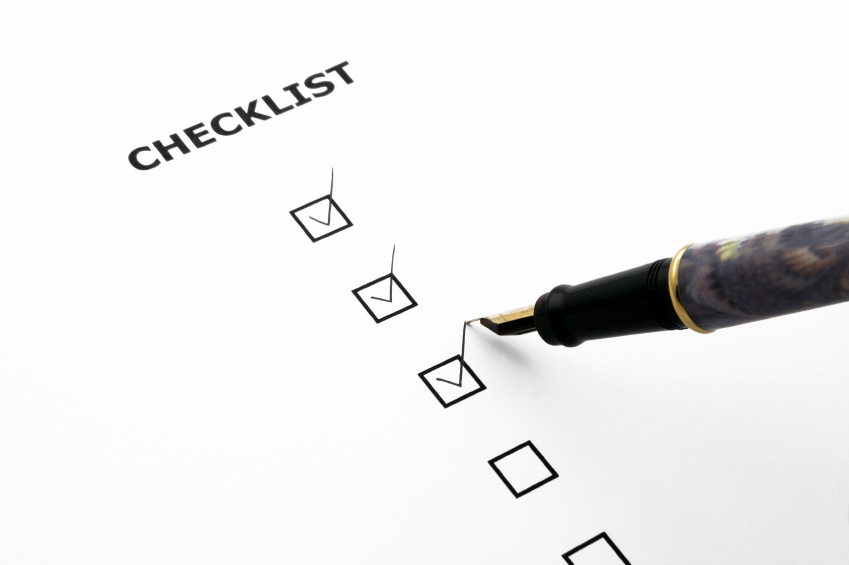
A Brief History
Most everyone knows what a checklist is. Your grocery list is a form of a checklist. So, where did checklists as we think of them today originate? Most attribute the creation of checklists to the introduction of the B-17 Flying Fortress in 1935. On the first flight of the B-17, the aircraft stalled just after takeoff. The ensuing crash injured all five crew members, and two later died of their injuries.
The investigation revealed that the crew had forgotten to remove a control lock preventing the pilot from being able to control the aircraft properly. Many feared the new airplane, with four engines, retractable gear, flaps, and other innovations in aircraft design represented an aircraft that was too complex to fly.
Rather than attempt to do more training Boeing’s test pilots designed simple, brief checklists. The checklists seemed almost like a given. Pilots all had extensive training, so on the surfaced they appeared to be redundant. However, pilots went onto to fly the B-17 almost two million miles without a single accident. So, checklists made a difference.
Of course, checklists of many kinds, have been prevalent in aviation for decades. Further, the use of checklists has migrated into many complex industries from large construction projects to the medical world, space programs, and other complex jobs and organizations.
Checklists in Private Companies
As emergency response plans evolved, primarily from government agencies, checklists found their way into emergency plans. Emergency response plans (aside from safety-related plans like fire evacuation procedures) slowly grew, mainly following the Tylenol tampering and subsequent murders in 1982. Johnson & Johnson was widely praised as showing private businesses how to manage a disaster effectively. With the evolution of company emergency response plans, checklists became an integral part of those plans.
However, there is one vast difference in the personnel involved in company emergency responses versus the personnel in aviation, medicine and other complex jobs where checklists are in widespread use. Checklists for many of these specialized areas are used by highly trained and skilled people, such as pilots, surgeons, and industrial engineers. Conversely, in companies today almost all personnel with responsibilities in the emergency response plan have “a day job” and receive very little training in their emergency response duties. As such, a checklist such as those used by pilots or surgeons; that is brief, short and serves as a reminder of what the specialist is required to do, is not very effective in most emergency response plans.
The short, brief checklist format only works with those jobs where those performing the job have received a high level of training and skill building. For those who fill a position in an ER plan receive very little training and even less practice. While companies are putting more emphasis on exercises, most still lack the level of detail to fully exercise each position in the plan. In addition, companies must always have and assume alternates will be called upon to fill a position in many cases.
So, while short and to the point is great for those highly skilled professions, we need just the opposite in emergency response plans. For most organizations, a checklist should be detailed, instructive and as long as necessary to direct someone in filling a position.
So, it’s only appropriate that I provide you with a checklist on how to create your emergency response checklists.
How to Build Your Checklists
- Define each and every position in your emergency response organization. These positions should be organized by their function and not a person or a department.
- You should assume that the persons who will fill a position have had little or no training on the position or performing the associated tasks.
- Start each item on the checklist with a clear action verb. Use specific words, not ambiguous ones. Try to avoid words like “ensure”, “verify”, or “review”. The actions should be measurable in that its clear that a task is completed or not completed. A term like “verify” may work, for positions who may be overseeing others and its there job to follow up to see if another person completed the task.
- Provide as much instruction as necessary to direct someone to complete the associated task. Whereas historically checklists are brief and short, don’t worry if this level of instruction expands the checklist to a few pages if needed.
- All instruction should be actionable. In other words, do not get into information like a concept of operations, philosophies, or company policies. Save this for training or other documents.
- When the checklist item requires a lot of detailed instruction or reference, include the details on where to find the additional information (i.e. Annex B – Page 14, etc.).
- Responses to emergencies are complex and each response is different based upon the circumstances of each emergency. While you want each checklist item to be specific you must still have room for exceptions and variations. So, a checklist should also be part of the incident log and have room to note exceptions to items on the checklist and keep other related notes. Consider creating the checklist in a landscape format to provide more space for writing notes next to each checklist item.
- Checklists in an emergency response plan should be designed to jumpstart each position by providing direction for the first 24 hours. By this time, your organization has had time to get a team in place, finalize an action plan and have the team working toward a common goal. A checklist can be divided up into three sections, immediate action items, intermediate or next actions and then ongoing actions that may repeat daily as long as response operations are ongoing.
- Finally, organize your checklists so that each one can stand alone. Make each checklist a separate document, or if you create them all in one document make sure each checklist starts on a new page so checklists can be printed and separated.
In our high tech world today, the trend is to design everything to work on a smartphone or other mobile device. It’s natural to assume that checklists will migrate to this same platform, and they are in many ER related applications today. However, in a high-stress environment such as a corporate emergency response there is still a case to be made for paper checklists.
Using paper and writing notes forces one to slow down just a bit and be more mindful. The pace will always be hectic, but writing can actually create a space to reflect on what’s happening and ultimately make better decisions. In addition, most technology forces a user to jump from place to place and actually hindering the ability for someone to see their own big picture as it relates to one person’s roles and responsibilities. The paper checklist allows you to create your own “big picture” for your job.



